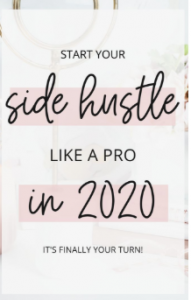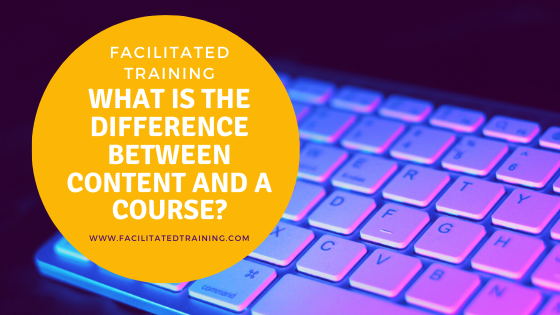What is the difference between Content and a Course?
Not everyone is a learning designer. For many in Human Resources, or Learning and Development we find ourselves being a ‘jack of all trades.’ However, there are times when it is important to dig into the theory of best practice. And creating a professional development course is one of them.
So what is the difference between content and a course?
The first is associated with information, and second enables the information to create learning to meet a specific outcome.
As a subject matter expert, it easy to fall into the trap of information overload. You know, ‘everything is important.’
This reminds me of a time when an OHSE manager engaged a supplier to create a manual handling e learning module. Rather than keeping the end in mind.
Which was to ensure that workers were able to safely work whilst lifting or moving objects, they took the approach of more information was better. The majority of learners were front line workers, who would be moving heavy items from time to time.
Remember, for most people, elearning is not necessarily their first choice for learning. So just imagine for a moment making this training mandatory and one hour in length. Complete overkill. A terrible learning experience, that learners remember the poor experience, not the learning.
In many ways, this is the online version or standing in front of a group of people for an hour, with a slide deck and talking at them for an hour. Both a painful, and do not respect the audience, or the learning outcome.
So why does this still happen? In a time that we are being told that businesses are time poor, but still want their employees trained, why would you accept that the learning experienced will be a poor one?
As technology and learning platforms become increasingly accessible (and this is a good thing), it also means that increasingly, there is a lot of poor quality e learning or course content hitting the market. Some of this is being driven by the gig economy.

Eeek. So much content. So little learning
(What’s your side hustle?) A common topic that you may have noticed is learn to be a business coach via elearning, where you will learn to create your own coach to train other coaches. (Cynical much? Maybe.)

The terms are distinct, and both are crucial steps to building a course that learners will love. There IS a difference between creating a great course, and just putting content online. Sure, you can put some videos and pdfs online, you can even drip feed them over a period, but that doesn’t make it a great course.
The key is planning, and instructional design. This helps to create a learner-centric, engagement rich, learning environment (which is what you really want).
5 main differences between content and a course
1 Structure and Order
A great course should be clearly broken down into modules and then smaller chunks (you might use different names for these, e.g. Topics and Lessons, but the theory is the same.)
This step by step structure allows students to progress through your course content in a logical manner. It helps them to see where they are up to and what comes next.
2.Guided Implementation
A great course encourages students to implement what they have learned as they go.
In some cases, this implementation is mandatory (you might need to submit work to unlock the next module, or in University you’ll need to submit work to pass, to be allowed to continue with the course)
Your course does not need mandatory implementation, but it should allow time for students to try what they have learned. It’s important to do this in little bits along the way, rather than leave all of the implementations for a final project at the end.
3.Support
Your students need support, and a great course should offer this in several different ways.
There are lots of places online where you can buy a self-paced “course”. You get a username and password, and access to their online content. End of story.
But part of the reason (a BIG part) that online course completion rates are so low, is the lack of accountability and support. Support should be there to keep students on track, to show them where to go and what to do, to answer questions when they get stuck, to be there for them.
How you offer support within your course will depend on the type, of course, you are building, the platform you are using… but make sure you have some support. It will make all the difference in the long run.
4. Assessment
I’m adding this one in, although it won’t be relevant for everyone.
Well, structured assessment can form part of a robust review process. It helps the students to clarify their thoughts, to find words for things they might not have thought through, and to reflect on what they’ve learned.
Better still, it allows you to see how your course is working.
If students are getting all the answers right, you’ve built a great course. If every student is getting a specific answer wrong, then you’ve got a gap in your content or your process. Without assessment, it can be more difficult to find these gaps.
5. Feedback
You might not want structured assessment within your course though, and that’s ok. If you don’t have an assessment, at least ensure you include a feedback cycle.
There should be a way for students to get feedback on their work. How will they know what they did well, and what they could improve if no one ever tells them?
Summarize the module, what they learned and next steps
For each lesson, ideally try to make it no longer than 20 minutes so the lesson is consumable and keeps the attention of adult learners. For the learning activities, try to make them as attainable (think bite-size) with some form of feedback to let learners know if they understand (and I want to know too!). When creating an activity try to make them no longer than 30-45 minutes to perform.
So, do you build new content, do you buy content, do you outsource the content to a 3rd party e learning designer, or purchase editable training materials?
Each approach has their pros and cons.
| Approach | Pros | Cons |
| Design in house |
|
|
| Outsource development of content |
|
|
| Buy generic online module library |
|
|
| Purchase editable content (face to face and virtual workshops) |
|
|
What are your thoughts? Tell us about your experiences as a learner or as a someone who is creating learner content. What motivates and frustrates you when it comes to learning experiences in the workplace?
Recent Learning Maven blog posts that you may have missed.
- Curated learning, useful or fad?
- Nailing interview questions, behavioural interview questions.
- Stop with the boring workplace training
3 Interesting reads from around the web (HR and Organisational Development focused.)
https://www.fosway.com/research/next-gen-learning/covid19-research/
https://www.forbes.com/sites/enriquedans/2020/06/06/working-from-home-its-now-athing/#5c7d24fb5d54
https://sloanreview.mit.edu/article/five-ways-leaders-can-support-remote-work
Facilitated Training has the solution that you need. Editable training materials that can be used again and again. Insert your company logo, add in case studies or examples from your workplace, or train using the quality training materials, as is.
Facilitated Training is your one-stop-shop for world-class, customisable training and professional development resources.
Facilitated Training offers training and organisational development resources to facilitators, trainers, coaches, HR managers and individuals.
Specialising in customisable leadership and management skills, Facilitated Training features a wide variety of products, including Training resources, Professional development courses, assessments, ebooks, videos and more.
Click here for customisable training materials that will assist your workplace in managing resources and output.
www.facilitatedtraining.com
About the author: Colleen Condon
Colleen likes to keep things creative in all that she does, often using marshmallows as a source of inspiration.
Everyone knows that ongoing learning is essential for both personal and professional success and yet, for many, this means hours of attending dead boring training or completing’ losing the will to live’ eLearning modules. Colleen’s mission is to end tedious professional development while ensuring targeted outcomes for learners and businesses.
Colleen has honed her skills over the last 20 years across multiple industries and locations. Her previous role saw her overseeing the training and development needs of over 60, 000 employees across 13 countries in the APAC region. This enabled her to hone skills that celebrated diversity and understanding human commonality through learning, and that in the absence of a common language, flip charts and coloured markers helped her to overcome most challenging situations.
After taking a ‘go away package’, in 2019, Colleen founded her own business, Facilitated Training, harnessing her global learning experiences and sharing them through ready to use learning resources, specialising in leadership, mentoring, guest speaking, creative problem solving, filling the gap of high quality, customisable training resources and tools.

